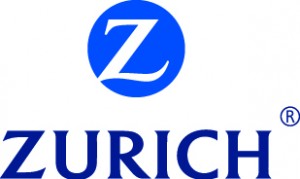 Zurich Insurance says its restructuring program is on track to achieve its goals over the next few years, continuing its work on cutting expenses, stabilizing its property and casualty business and rebalancing its portfolio.
Zurich Insurance says its restructuring program is on track to achieve its goals over the next few years, continuing its work on cutting expenses, stabilizing its property and casualty business and rebalancing its portfolio.
The proof is in the numbers. During the second quarter, the company reported net income of $896 million, a 21 percent increase from $739 million reported during the same period last year.
Property & Casualty (P&C) combined ratio improved by 0.3 percentage points to 97.8 percent, compared to full year 2016, the company said. (The combined ratio excludes the effects of the UK’s Ogden discount rate change, which is used to calculate personal injury and accident claims and has hit earnings across the industry).
“I am very pleased to report results that show what dedicated people can accomplish in a relatively short time, as we were able to grow our businesses in local currencies, improve our underwriting and expand our customer reach, all while reducing our cost base,” said Group Chief Executive Officer Mario Greco in a company statement.
“Overall, these results give us confidence that we can maintain the positive momentum into the second half of the year,” he affirmed, during a call with investors to discuss the results.
Discussing the expense cutting program, Greco revealed that Zurich Insurance is on track to deliver its 2017 to 2019 targets, thus far achieving around $550 million in cost savings out of an ultimate target of $1.5 billion.
More cost cuts will be achieved over the remainder of the year, said Greco, admitting it is more challenging and more complex to reduce the combined ratio than to reduce the cost.
“Cost is about discipline and focus,” Greco said. “We activated the process, we’ll continue with that.”
Indeed, he added, every day the company finds more ways to reduce costs. “It’s important that … we’re showing discipline and we’re showing that we walk the talk. We’ve indicated the targets and we’re delivering quarter by quarter.”
Further, he said, Zurich has stabilized its property and casualty business. “The top line is showing slight growth on a like-for-like basis, underpinned by improved retention and by new business.”
The drop in the combined ratio was achieved by improvement in administrative expenses and the underlying accident year loss ratio, despite the ongoing tough market, which “remains quite soft in a number of locations around the world,” he added.
As a result of the tough market conditions, Zurich continues to push its restructuring program because the market is not going to help the group achieve its goals, said Group CFO George Quinn.
“We are looking to rebalance the portfolio. We are looking to change the shape over time and we’ll look to emphasize areas that we believe we see stronger performance and stronger potential. And we’ll use that shift to also benefit the technical performance,” he added.
Such targeted portfolio rebalancing was discussed in the commentary accompanying Zurich’s P&C results, which follows:
“On a like-for-like basis, excluding foreign exchange movements and businesses exited in South Africa, Morocco, Middle East and Taiwan, gross written premiums and policy fees were up slightly on a local currency basis, reflecting a targeted approach to reshaping the portfolio. In U.S. dollar terms premiums were down 3 percent or F$512 million. Overall, rates rose by around 1 percent in the first half year of 2017 despite challenging market conditions.”
North American Commercial Business
Discussing the North American commercial market – a particularly challenging business for Zurich and other insurers – Quinn said during its November 2016 investor day, the company had anticipated slightly more rate but slightly less loss cost inflation.
Instead, he added, “we’re seeing a bit less rate and a bit more inflation.”
The lines with the most troublesome rate are property and, to some degree, workers compensation, he said. On the other hand, loss cost inflation is a factor across the board but is particularly a problem with motor related business, he added.
However, that has been offset by positives elsewhere in the portfolio in Europe and Asia Pacific, so performance targets are still on track, Quinn affirmed.
Greco said the company’s balance sheet “is very strong today,” with an estimated Zurich Economic Capital Model (Z-ECM) ratio of 134 percent, which is above the 100-120 percent target range. (Z-ECM gauges capital adequacy.)
The company continues to focus on releasing capital from non-core businesses, which “has allowed us to fully offset the acquisition of the Cover-More travel insurance business on the capital side,” he added. (Zurich in April purchased Cover-More Group Ltd., a Sydney-based travel insurance and assistance solutions provider, with a strong market position in Australia, India and the U.S.)
The company’s “strong capital position is a fantastic foundation for what we intend to do around dividend and earnings,” said Quinn. “Even with significant volatility in the market, we would maintain our capital strength and it would impose no impediment to do what we intend to do drive higher earnings and to use that to drive higher returns to shareholders with the ordinary dividend.”
Despite its strong capital position, Greco reminded the analysts and journalists in an earlier call that M&A is not a strategic priority for the company.
“We are not focused on M&A, we don’t need to do M&A. We have no gaps to fill in M&A. And we remain extremely disciplined on our capital and we very well know that our priority is to deliver on what has been promised in November [2016] which is to increase shareholder returns over the next three years.”
*This story appeared previously in our sister publication Insurance Journal.





















 How Insurers Can Avoid Post-Merger Technology Failure
How Insurers Can Avoid Post-Merger Technology Failure  Northern California Flooding This Weekend Caused by Heavy Rain, High Tides
Northern California Flooding This Weekend Caused by Heavy Rain, High Tides  Berkshire Hathaway Enters Post-Buffett Era as Share Prices Fall
Berkshire Hathaway Enters Post-Buffett Era as Share Prices Fall  Surge of Supercharged Hurricanes Prompt Call for Cat 6 Classification
Surge of Supercharged Hurricanes Prompt Call for Cat 6 Classification 


